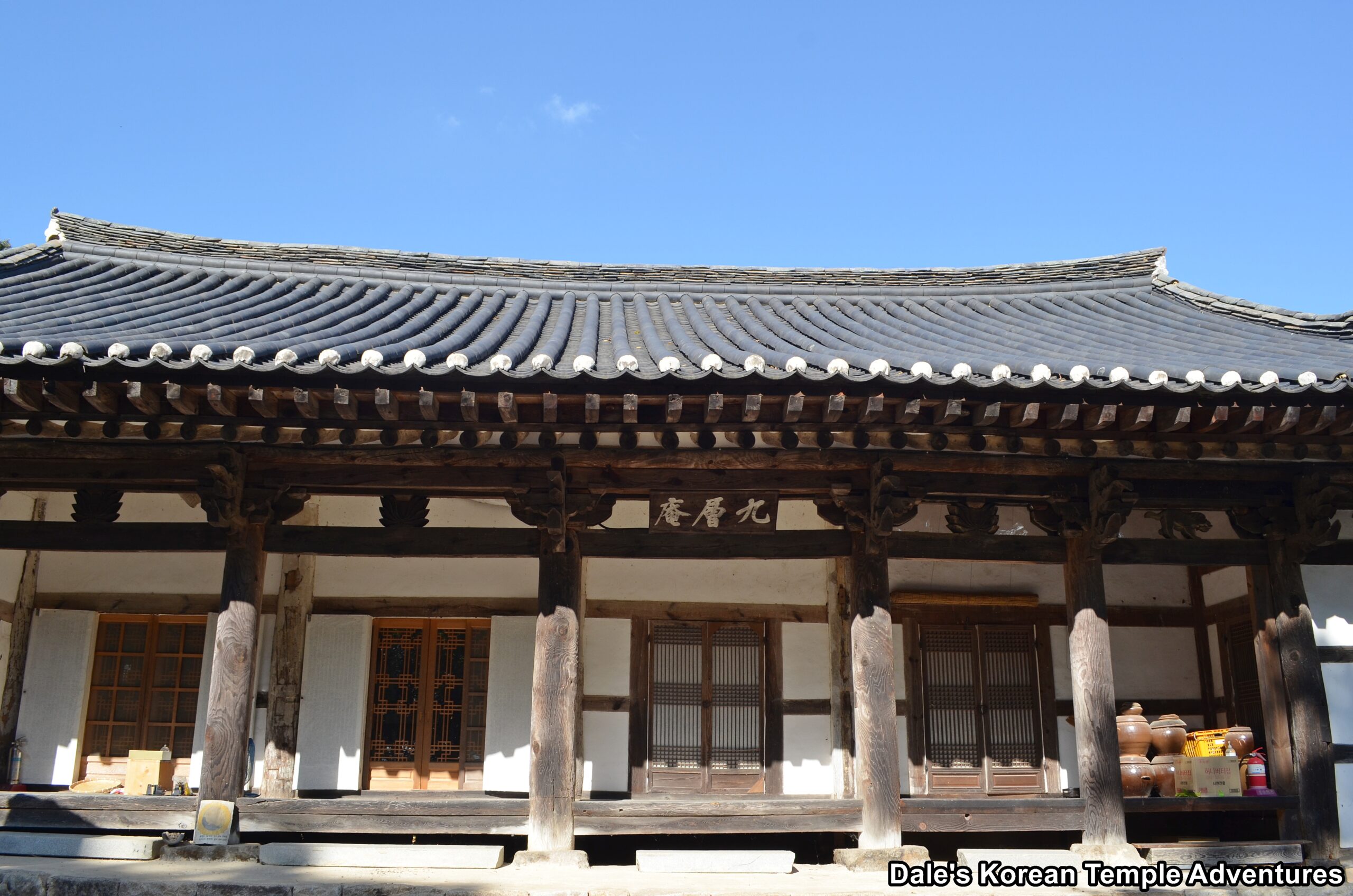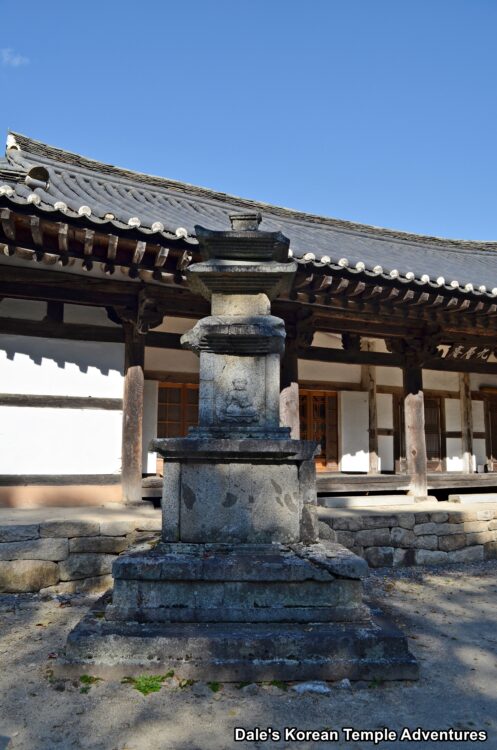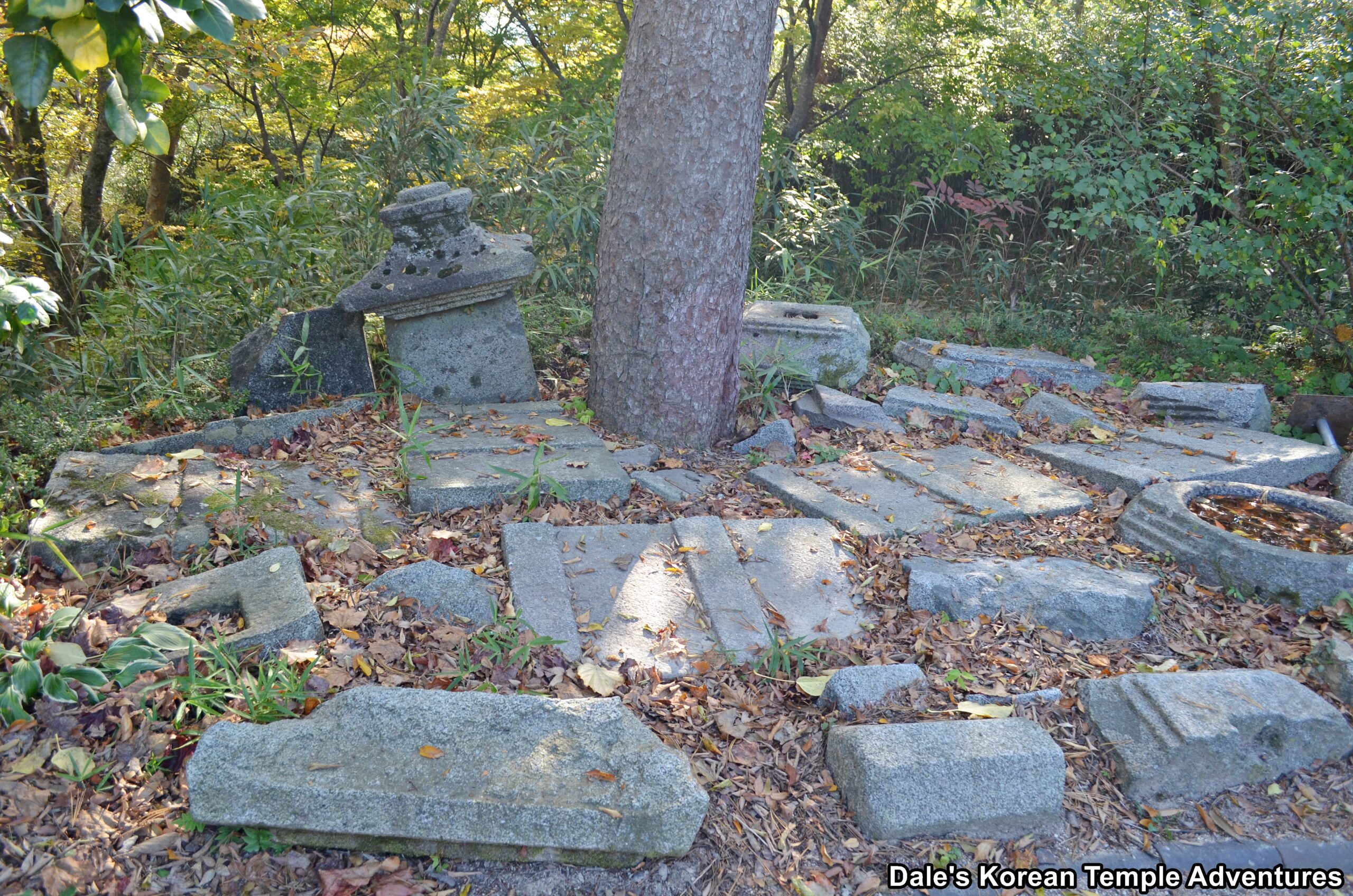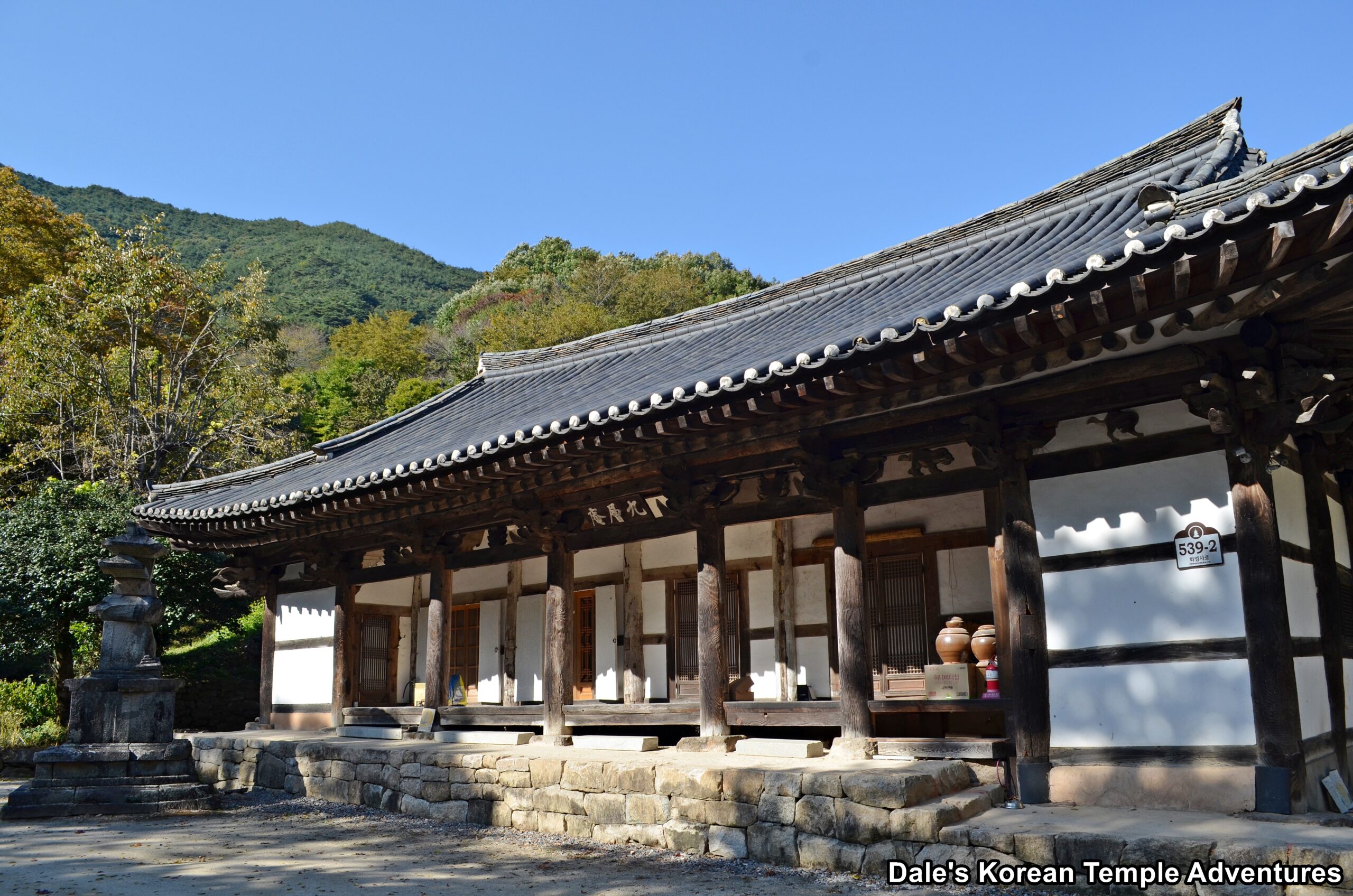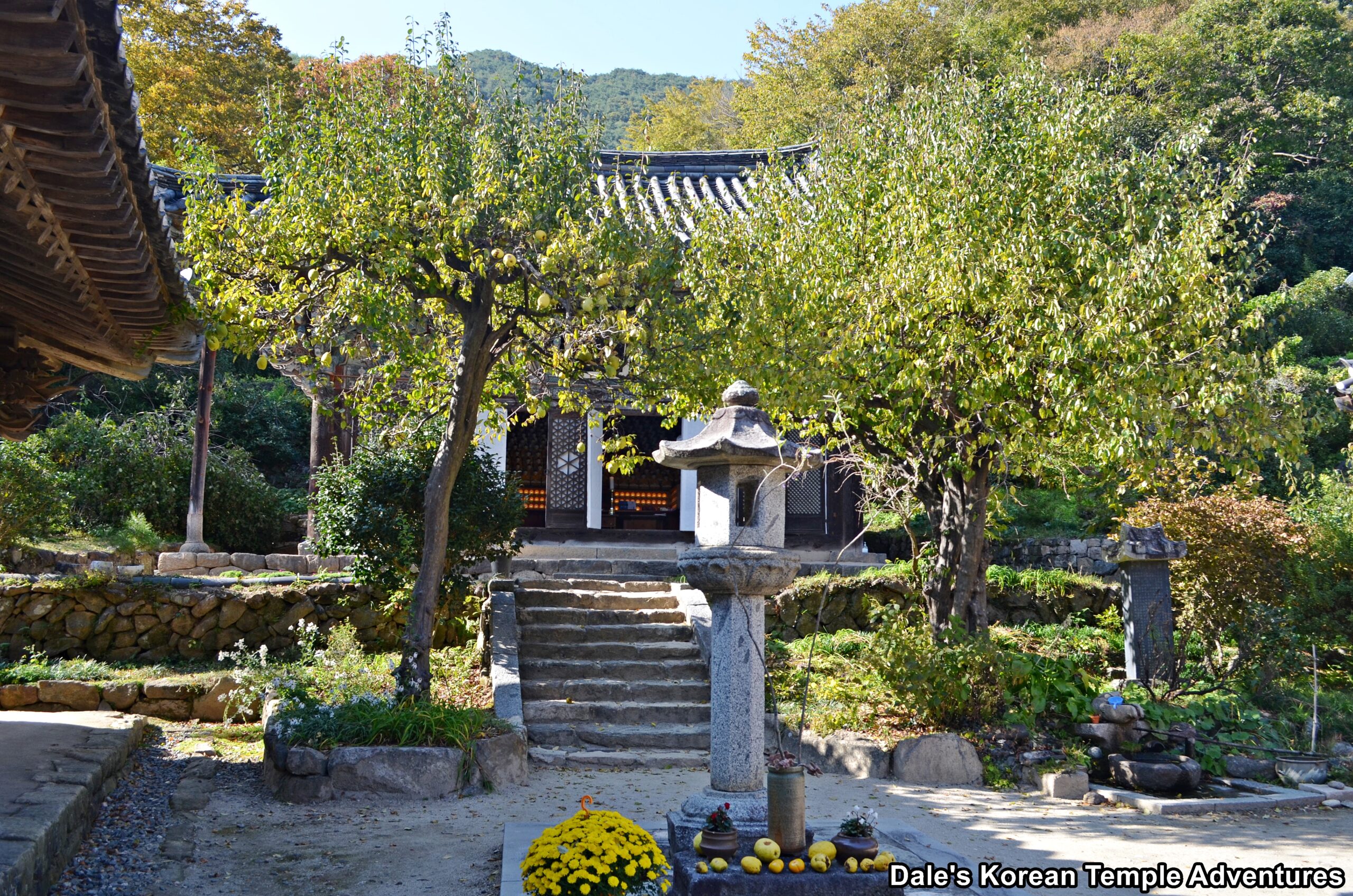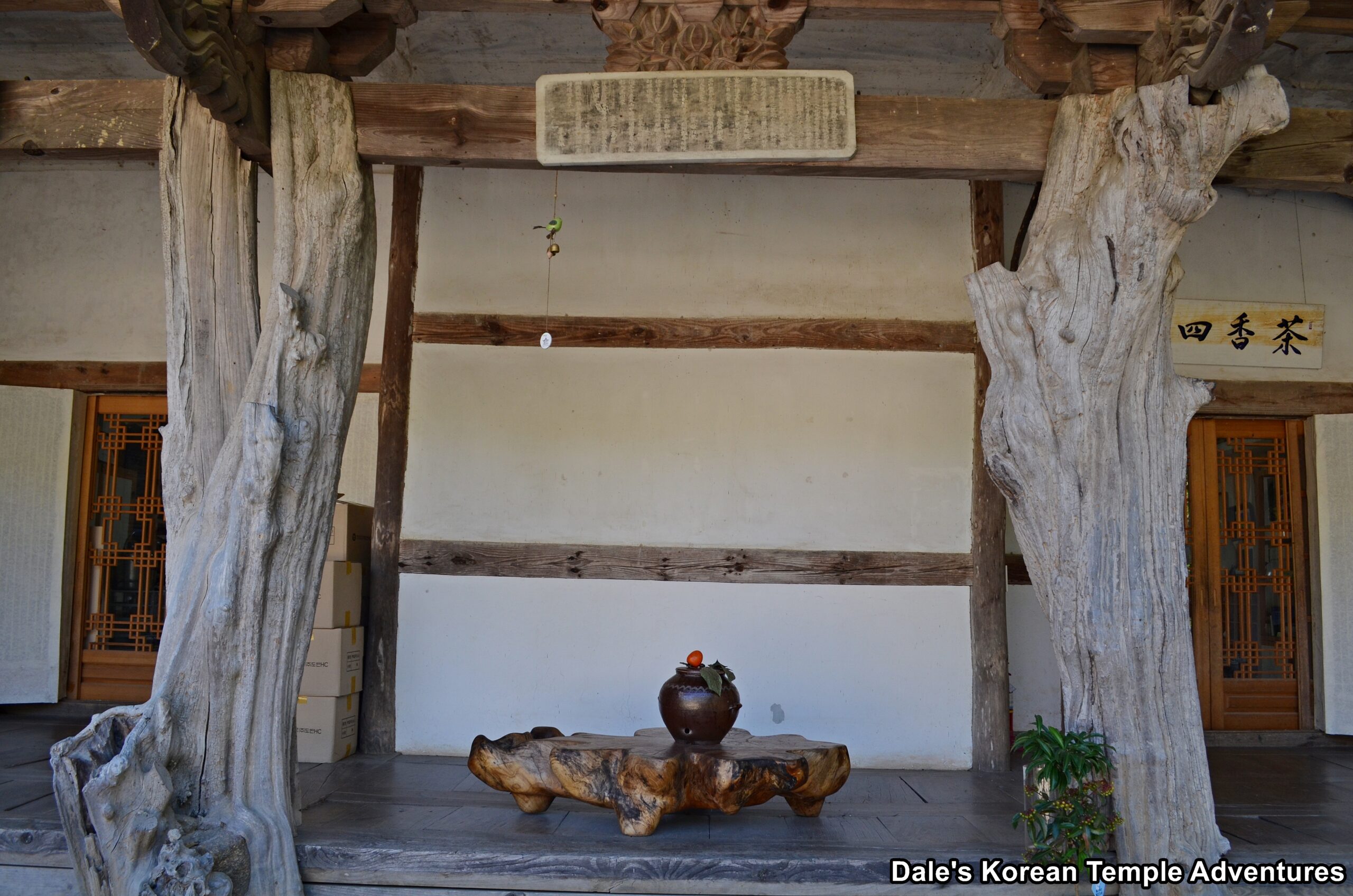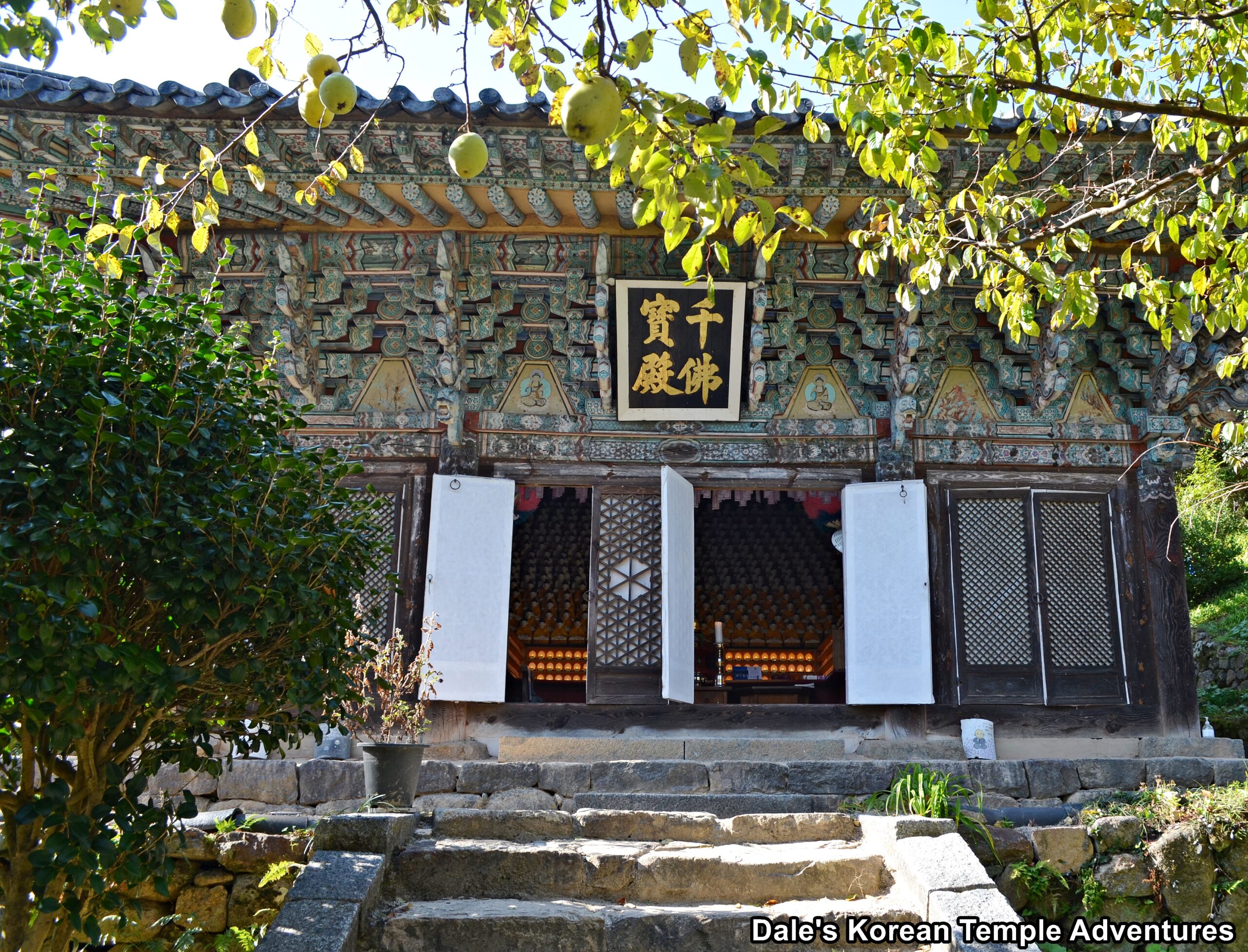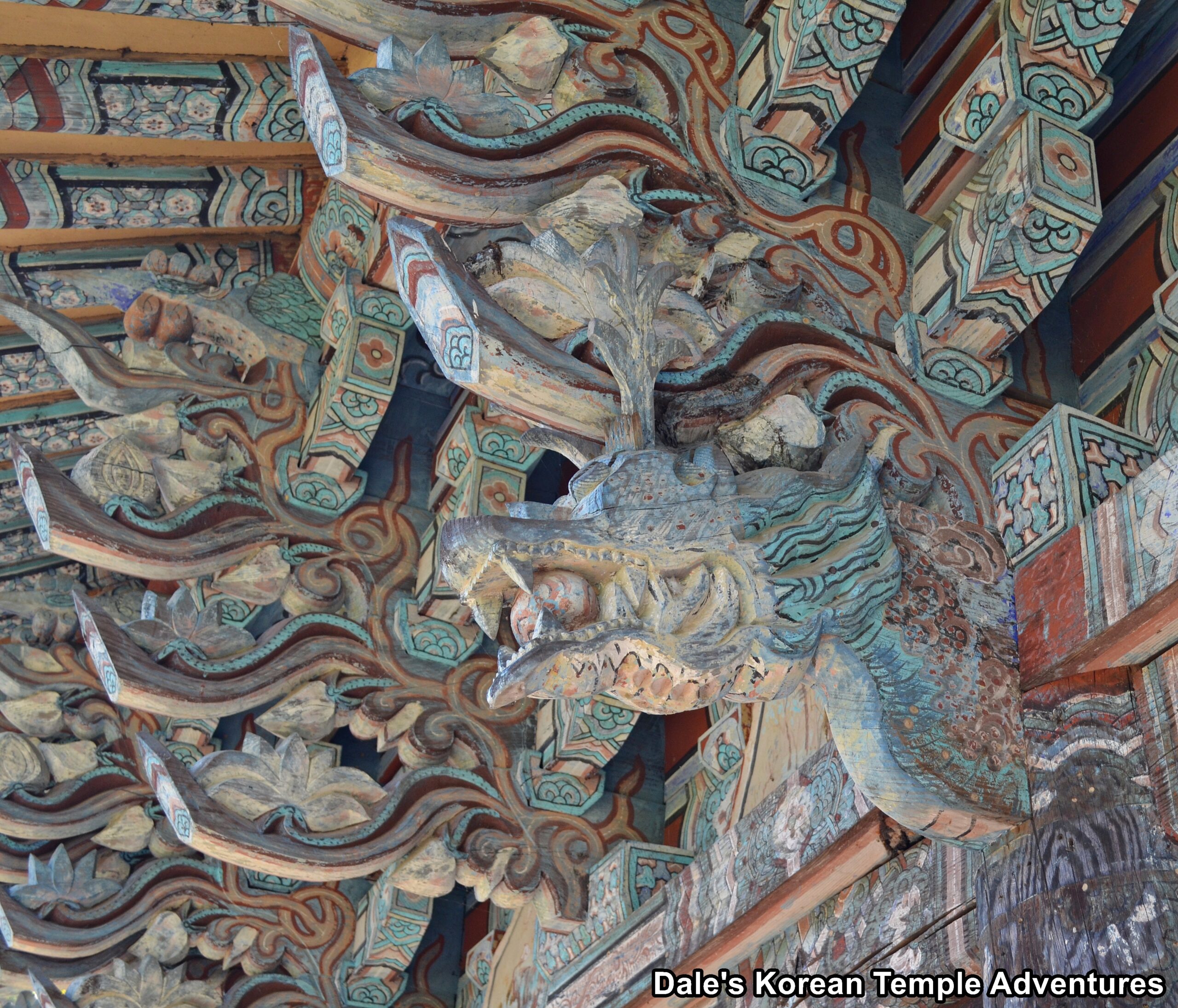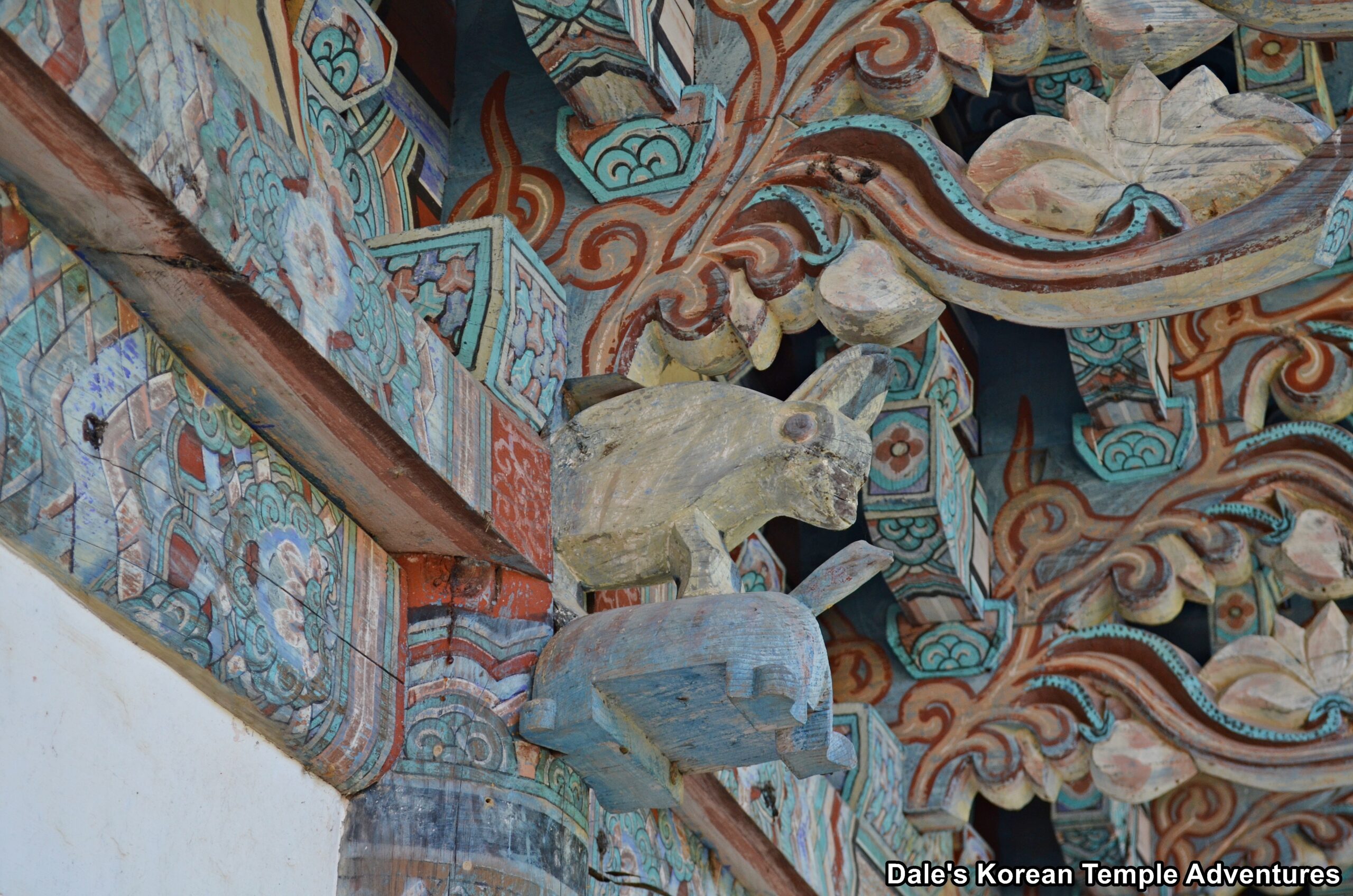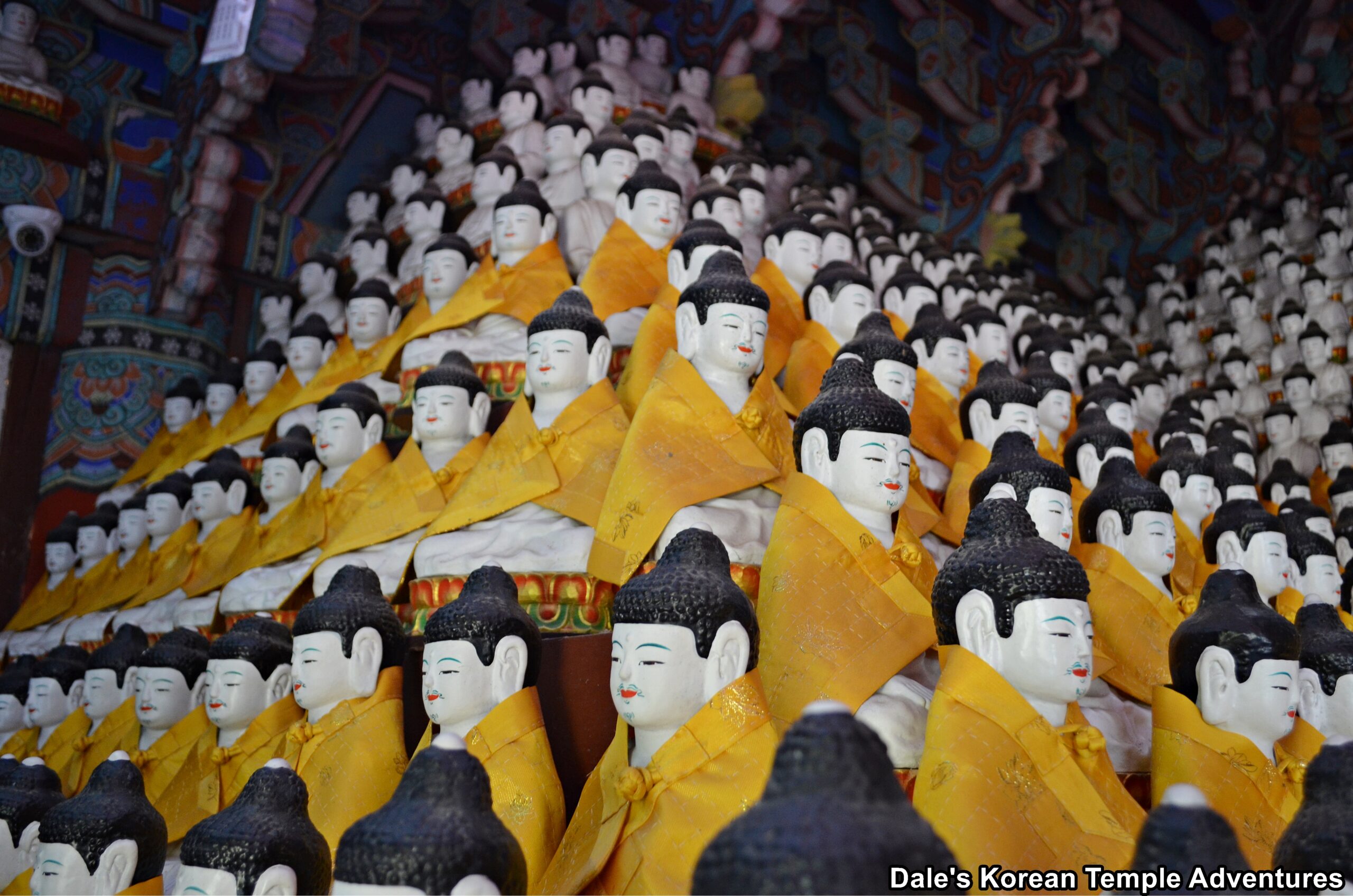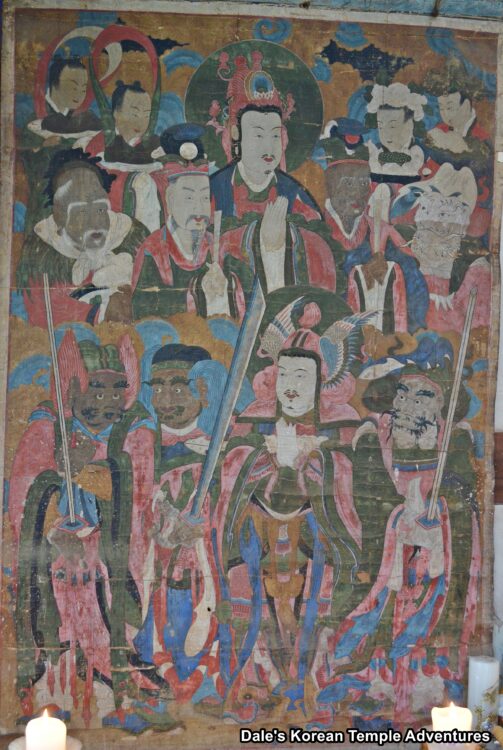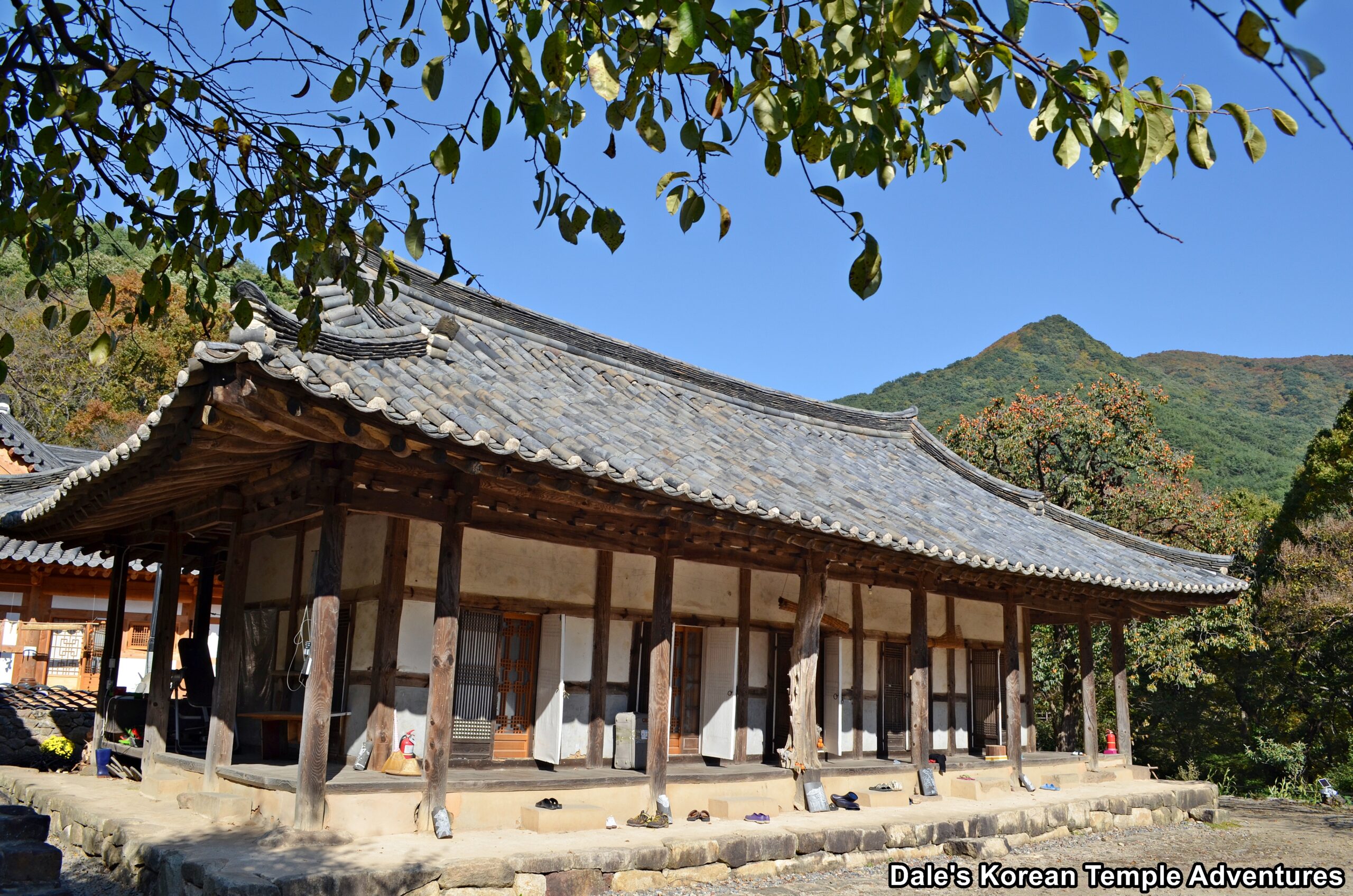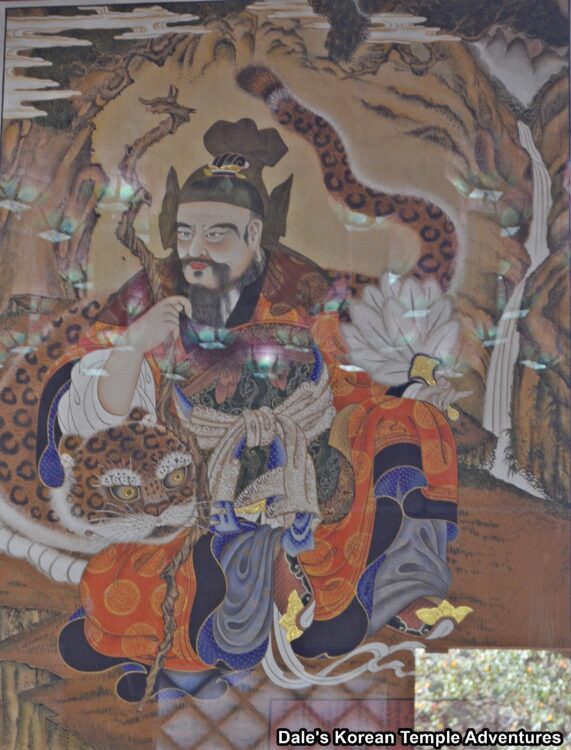Gucheungam Hermitage – 구층암 (Gurye, Jeollanam-do)
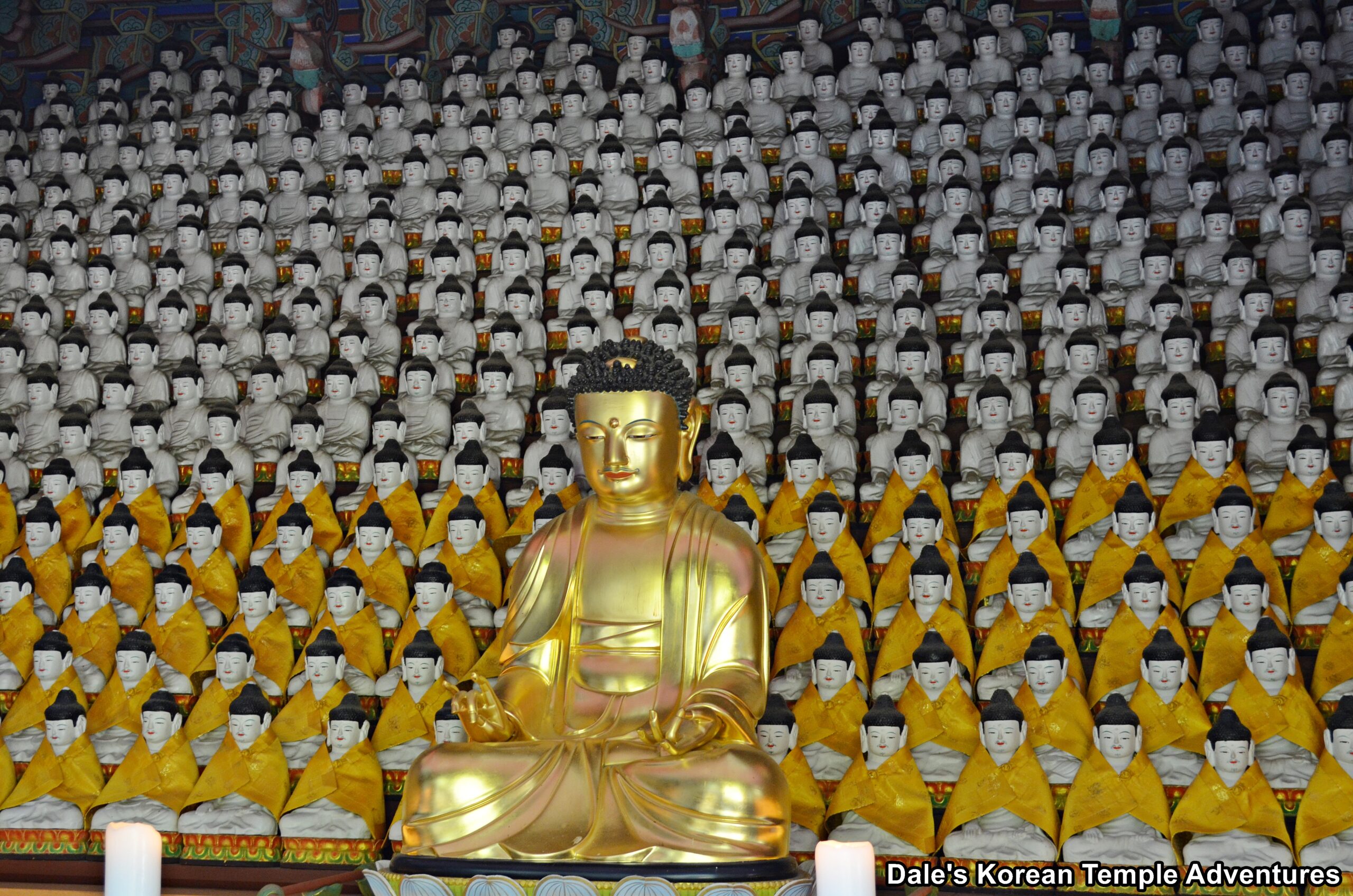
Hermitage History
Gucheungam Hermitage is located in Gurye, Jeollanam-do on the Hwaeomsa Temple grounds to the north of the main temple courtyard. In fact, Gucheungam Hermitage is one of eight hermitages on the Hwaeomsa Temple grounds. Based on artifacts discovered on the hermitage grounds, it’s believed that Gucheungam Hermitage was built at the end of Silla (57 B.C. – 935 A.D.). As for the name of the hermitage, which means “Nine Levels Hermitage” in English, it’s either a reference to a nine-story stone pagoda that once stood on the hermitage grounds or the nine grades associated with Amita-bul (The Buddha of the Western Paradise). However, a detailed history of the hermitage has long been lost to the passage of time.
Gucheungam Hermitage is home to a three-story stone pagoda, which seems to have been first built during Unified Silla (668-935 A.D.) and a stone lantern from the Goryeo Dynasty (918-1392). The seokdeung (stone lantern) is Jeollanam-do Tangible Cultural Property #132.
Hermitage Layout
Immediately when you arrive at Gucheungam Hermitage, you’ll feel this wonderful energy to it. And the first thing to greet you at the hermitage is the Unified Silla-era three-story pagoda. The base of the pagoda has two levels, or stylobate, with the upper stylobate consisting of four flagstones. On the first story of the pagoda, you’ll find an image of a seated Buddha. The pagoda was previously damaged, but eventually restored in September, 1961. Interestingly, there’s some remaining pieces to another historic pagoda in the treeline of the hermitage parking lot, as well.
Backing this three-story stone pagoda is a beautiful, naturally painted, Yosachae. It’s to the right of these monks’ dorms, and past the tea store (for which Gucheungam Hermitage is famous), where you’ll enter the main hermitage courtyard. To the left is the backside of the southern Yosachae building. There is a wooden porch area with a pair of gnarled juniper trees that act as beams to support the weight of the building’s roof.
Straight ahead, on the other hand, is the previously mentioned Goryeo-era seokdeung (stone lantern). The stone lantern stands 244 cm in height. The stone lantern was rebuilt in 1965, and it was designated a Jeollanam-do Cultural Property of Jeollanam-do in 1986. Originally, it’s believed that this stone lantern stood next to the three-story stone pagoda at the entry of the hermitage. In front of the stone lantern is a rectangular stone.
Book-ending the stone stairs that lead up to the Cheonbul-jeon Hall, which acts as the hermitages main hall, are a pair of quince trees. The exterior walls to the Cheonbul-jeon Hall are adorned with various wooden statues like dragons and a rabbit riding a turtle, which is from a Korean folk tale involving Yongwang (The Dragon King). Stepping inside the compact Cheonbul-jeon Hall, you’ll find rows of statuettes dedicated to Seokgamoni-bul (The Historical Buddha). The first five rows of these statuettes are adorned with a golden cape over each of the dozens of statuettes. And resting on the main altar is a large statue dedicated to Seokgamoni-bul. Tucked away in the left corner is an beautiful, older Shinjung Taenghwa (Guardian Mural).
To the right of the Cheonbul-jeon Hall and the historic seokdeung is yet another Yosachae. It’s to the left of this northern Yosachae that you’ll find the Suse-jeon Hall. Housed inside this shrine hall are a pair of modern paintings. The painting to the left is dedicated to Chilseong (The Seven Stars), while the painting to the right is dedicated to Sanshin (The Mountain Spirit). In fact, the Gucheungam Hermitage painting of Sanshin is a modern replica of the shaman mural found at Hwaeomsa Temple.
How To Get There
From the Gurye Intercity Bus Terminal, you’ll need to take a bus bound for Hwaeomsa Temple. This bus leaves every ten to twenty minutes, and the first bus departs at 8 a.m. The final bus leaves Hwaeomsa Temple at 8:10 p.m. From where the bus lets you off, it’s an additional fifteen to twenty minute walk to get to Hwaeomsa Temple. And from Hwaeomsa Temple, you’ll need to continue to head north for about 200 metres to get to Gucheungam Hermitage. The signs should guide you there.
Overall Rating: 5/10
So much about Gucheungam Hermitage is atmospheric. There’s just something about its overall feel and unrushed, historic disposition that gives it the rating it has. Additionally, the three-story pagoda at the entry, the Goryeo-era stone lantern in the centre of the main hermitage courtyard, the crooked juniper pillars supporting the roof of the southern Yosachae, the tea gardens to the rear of the Cheonbul-jeon Hall, and the artwork adorning the main hall (both inside and out). There’s a lot to love about Gucheungam Hermitage, especially if you’re lucky enough to have a cup of tea with a monk or staff at the hermitage.
